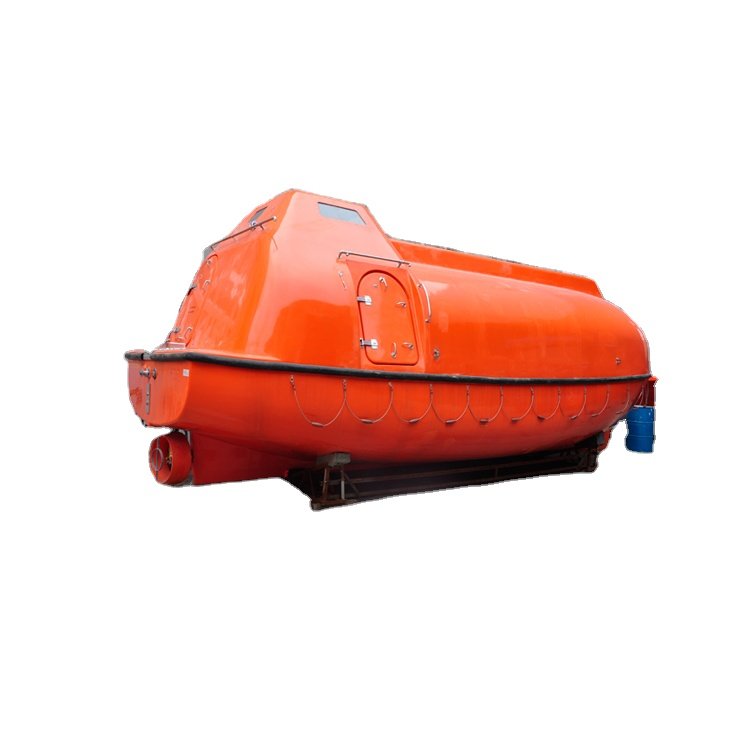Lifeboats are essential safety features on vessels, designed to provide a means of escape and survival in emergencies. Ensuring marine lifeboats are in optimal condition requires rigorous and regular maintenance and inspection. Proper upkeep not only meets international safety standards but also ensures the safety of crew members when needed.

Key Components of Marine Lifeboat Maintenance
Hull and Structure
Inspection for Damage: Regularly check the hull for cracks, corrosion, or structural damage.
Cleaning and Painting: Clean the hull to remove salt and debris, and ensure it is painted to prevent corrosion.v
Launching Mechanisms
Davits and Winches: Inspect davits and winches for wear and tear, lubricate moving parts, and ensure proper operation.
Ropes and Cables: Check for fraying, corrosion, or damage and replace as necessary.
Engines and Propulsion
Engine Checks: Perform routine maintenance, including oil changes, fuel filter replacements, and inspection of belts and hoses.
Propellers and Shafts: Inspect and maintain to ensure they are free of obstructions and damage.
Safety Equipment
Life Jackets and Lifebuoys: Ensure they are in good condition and easily accessible.
Emergency Rations and Water: Inspect and replace life saving equipmentbefore expiration dates.
Communication and Navigation
Radio and Signaling Equipment: Test to ensure full functionality.
Navigational Aids: Verify the condition of compasses and lights.
Seating and Safety Belts
Seat Integrity: Check for structural integrity and comfort.
Safety Belts: Ensure they are operational and in good condition.
Inspection Protocols and Procedures
Pre-Inspection Preparation
Documentation Review: Review previous reports and maintenance records to identify recurring issues.
Safety Briefing: Conduct a safety briefing for the inspection team.
Visual Inspection
Exterior and Interior: Perform a thorough visual inspection, noting any damage or irregularities.
Component Check: Examine the hull, engine, safety equipment, and launching mechanisms.
Functional Testing
Engine Start-Up: Test the engine for smooth operation.
Launch Test: Simulate a launch to verify the proper functioning of davits, winches, and release mechanisms.
Detailed Reporting
Inspection Report: Document findings in a detailed report, noting any issues requiring attention.
Maintenance Log: Update the log with actions taken and parts replaced or repaired.
Challenges and Solutions in Marine Lifeboat Maintenance
Harsh Marine Environment
Problem: Exposure to saltwater, humidity, and temperature extremes causes corrosion and damage.
Solution: Apply specialized marine-grade paints and coatings, implement routine cleaning, and use marine-grade materials.
Limited Access and Space
Problem: Lifeboats are often stowed in confined spaces, making access difficult.
Solution: Use compact tools and modular components, and schedule maintenance during downtime.
Regulatory Compliance
Problem: Keeping up with evolving safety regulations is challenging.
Solution: Provide continuous training, use digital systems for documentation, and conduct external audits.
Wear and Tear
Problem: Frequent use can lead to accelerated wear and tear.
Solution: Perform routine inspections, use high-quality parts, and establish a rigorous maintenance schedule.
Complex Systems and Technology
Problem: Advanced technologies require specialized knowledge for maintenance and repair.
Solution: Provide specialized training, collaborate with manufacturers for support, and maintain up-to-date manuals.
Human Error
Problem: Human error can lead to overlooked issues or improper repairs.
Solution: Develop standardized procedures, use checklists and protocols, and establish a quality control system.
Limited Availability of Spare Parts
Problem: Obtaining spare parts, especially in remote locations, can be challenging.
Solution: Maintain an inventory of critical spare parts, develop strong supplier relationships, and standardize parts across the fleet.

Future Innovations for Maintenance and Inspection
Advanced Monitoring Systems
Smart Sensors: Monitor real-time performance metrics and analyze data for predictive maintenance.
Remote Monitoring and Diagnostics
IoT and Connectivity: Enable remote monitoring and diagnostics using cloud-based solutions.
Autonomous Inspection Technologies
UAVs: Use drones for aerial inspections of hard-to-reach areas.
Robotics and Automation
Underwater Inspections: Develop robotic systems for underwater inspections and automate routine tasks.
Predictive Maintenance Algorithms
AI and Machine Learning: Analyze historical data to predict maintenance needs and shift to condition-based maintenance.
AR and VR for Training and Maintenance Support
AR Applications: Use AR for maintenance guidance and training.
VR Simulations: Provide VR simulations for crew training in emergency procedures.
Advanced Materials and Coatings
Nano-coatings: Use advanced materials to enhance resistance to corrosion and wear.
Integrated Maintenance Management Systems
Digital Platforms: Implement systems for lifecycle management, including maintenance scheduling and regulatory compliance.
Conclusion
Regular and thorough maintenance and inspection of marine lifeboats are vital for maritime safety. Adhering to structured protocols and best practices ensures compliance with safety regulations and enhances the reliability and longevity of lifeboats, safeguarding the lives of crew members in emergencies.






Comments (0)